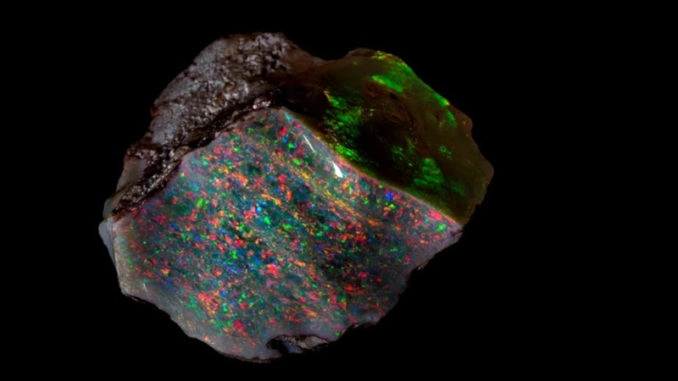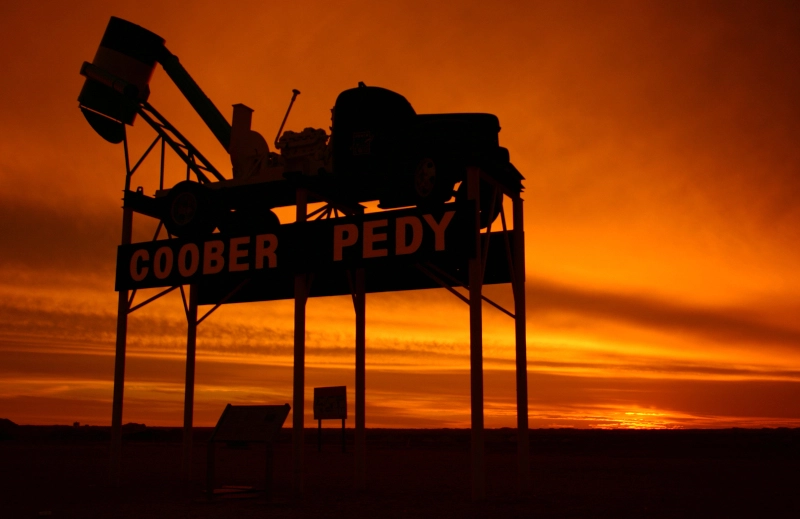
This multi-colored opal like a kaleidoscope is the most expensive opal in the world.
With a weight of 2 pound and its multicolored reflections depending on the angle at which it is viewed, this unpolished gemstone the size of two cricket balls is the largest found in the world.
Where does the Australian Fire come from ?
The Australian Fire was discovered in 1946 at Coober Pedy, in the South of Australia by a certain Walter Bartram. This pebble remained preciously in its adopted family until 2017 when it joined the permanent exhibition at the South Australian Museum.
This uncut stone has been preserved in its rough form with the exception of two faces that have been polished and which present pretty colors with many yellow, orange and red reflections. It is believed to be the finest example of its species and it was thanks to the unique geological properties of southern Australia that it was formed.


Geology
It is the science that studies rocks and soils.
Evaporation
It is the transformation of a liquid into vapor.
Precious stone
It is a stone used to make jewelry. They are sought after because they are rare, vibrant and hard.
How was the world's largest opal formed?
Museum director Brian Oldman explains that when the inland seas evaporated millions of years ago, it was left behind an immense amount of a compound called silica. This particular silica gave birth to these precious opals.
To get their shape, it takes millions of years. That is, the time that water and silica flow through the cracks in the sedimentary rocks. The water evaporates to leave a thin layer of silica. This process has been repeated many times over the centuries.
It takes about 5 million years to obtain an opal 0.4 in thick. Many opals end with microscopic structures (very small) to form multicolored and shiny gems.
Australia is the country that produces 90% of the precious opals thanks to its particular soils.


How much is the price of the biggest opal in the world estimated?
The price of this precious is estimated at 900,000 dollars (the American currency) or a cost in euros of 837,836.


Rough
It’s the opposite of soft to the touch.
Sediments
It is the set of particles present in the water that accumulates in the bottom.

